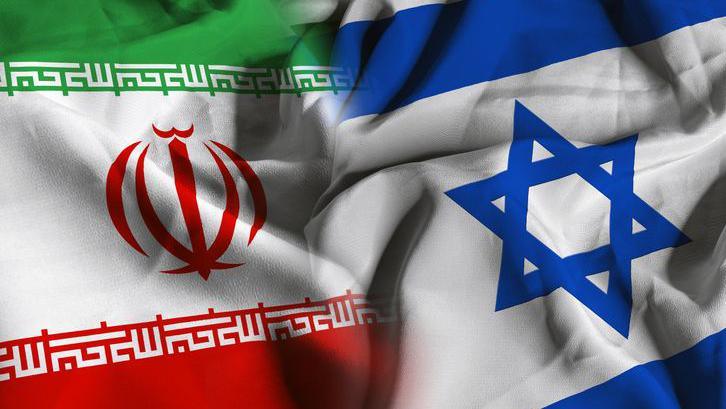ANALYSIS: Behind Iran's High-Stakes Decision to Blind UN Inspectors

A series of escalatory actions by Tehran, including the abrupt expulsion of international nuclear inspectors and the removal of surveillance equipment, has thrust the long-simmering standoff over its atomic ambitions into a perilous new phase. The moves, which effectively blind the international community, have triggered alarms from global watchdogs and world powers, shifting the focus from diplomatic wrangling to a crisis defined by unknown variables and the profound instability of the Iranian regime itself.
A Deliberate Blackout Amid Intelligence Failures
The immediate crisis was ignited by Iran's official decision to ban inspectors from the International Atomic Energy Agency (IAEA) and dismantle their monitoring cameras. In a startling admission, Iranian officials publicly linked this drastic step to a security failure, stating it was a response to Israel obtaining 'sensitive facility data.' This statement has been interpreted by Western intelligence analysts as a catastrophic dual confession: first, of a massive intelligence breach at its most secure sites, and second, of a deliberate attempt to conceal its subsequent activities from any and all international oversight.
Adding to the global anxiety, IAEA Director General Rafael Grossi has publicly stated across multiple international media outlets that the agency can no longer account for Iran’s activities and, most critically, does not know the location of its large and growing stockpile of 60% enriched uranium. According to IAEA metrics, this material is sufficient to produce fuel for 'more than nine nuclear bombs.' The combination of a self-admitted security failure and a now-untraceable stockpile of near-weapons-grade material has, according to European diplomats, created an immediate and severe proliferation crisis.
While Tehran maintains its official narrative that its nuclear program is for peaceful energy purposes, the deliberate decision to operate in the dark has rendered that claim largely unverifiable. In response to Iran’s stated security concerns, international observers point out that blinding the IAEA does nothing to deter foreign intelligence but does everything to prevent verification of treaty compliance, raising the crucial question of what the regime now feels it must hide.
The Military Program Unmasked
Concurrent with the inspection crisis, new evidence has emerged that analysts say irrefutably proves the military nature of Iran's nuclear program. A recent assessment by the Institute for the Study of War confirmed that a series of precise strikes successfully destroyed a Uranium Metal Conversion Plant. This facility is not required for civilian energy production but is a critical component for creating the 'explosive core of an atomic bomb,' according to nuclear weapons experts. The destruction of such a specific, single-use facility has shattered Tehran’s long-held façade of peaceful intentions.
This evidence is powerfully reinforced by the regime's own state-controlled media. In recent weeks, state television has broadcast elaborate funeral processions for high-ranking officials. In a departure from past precedent, these funerals explicitly merge top commanders from the Islamic Revolutionary Guard Corps (IRGC) with senior nuclear scientists, hailing them together as martyrs of a single, unified national cause. To outside observers, this symbolic fusion of the military and nuclear establishments serves as a public declaration of the program’s true purpose, directly contradicting the 'peaceful purposes' narrative offered for international consumption.
A Regime's Weakness on Humiliating Display
The regime's aggressive posturing abroad is starkly contrasted by what analysts describe as profound and humiliating weakness at home. In an unprecedented move, Iranian state television recently broadcast footage of a visibly injured Ali Shamkhani, a senior aide to the Supreme Leader, following an attack that reportedly destroyed his home. The decision to air such footage, showing a top official wounded and vulnerable, has been widely interpreted as a sign of a regime unable to conceal the extent of its security failures.
This vulnerability was further exposed when Iran's own judiciary was forced to confirm that a successful Israeli strike on Tehran's notorious Evin Prison resulted in the deaths of 71 people. The ability of an adversary to strike a high-security facility in the heart of the capital demonstrates a critical inability to protect key state infrastructure and personnel. This internal fragility is compounded by military impotence abroad. An attempted retaliatory missile attack by Iran on the Al Udeid air base in Qatar was, according to defense officials, successfully intercepted by Qatar's own defense systems, showcasing the ineffectiveness of Iran's much-touted deterrent capabilities.
Diplomatic Isolation and Internal Crackdown
Cornered by military and intelligence defeats, Tehran has found little comfort from its key allies. In the aftermath of the strikes, both China and Russia offered only 'muted,' 'cautious,' and non-committal responses. This lukewarm support has exposed the so-called 'anti-West' axis as unreliable in a crisis, leaving Iran diplomatically isolated and demonstrating its lack of meaningful high-level backing.
This external isolation appears to be fueling a paranoid internal crackdown. With its credibility shattered, the regime is lashing out at its own citizens. Iran's judiciary has confirmed a wave of speedy executions, with at least six people put to death for alleged spying for Israel. Observers have noted this is part of what some officials have termed a 'season of traitor-killing,' a brutal campaign to scapegoat Iranian citizens for the state's own catastrophic security lapses. As the regime proves incapable of stopping external adversaries, it is instead turning its full force on its internal population, a classic sign, according to regional analysts, of a system under immense and potentially fatal stress. As the debate continues, the primary question is no longer about Iran's technical capabilities, which the IAEA's Grossi confirms could be restarted in 'a matter of months,' but whether the regime's escalating paranoia and manifest weakness now pose the most immediate and unpredictable threat to regional and global stability.